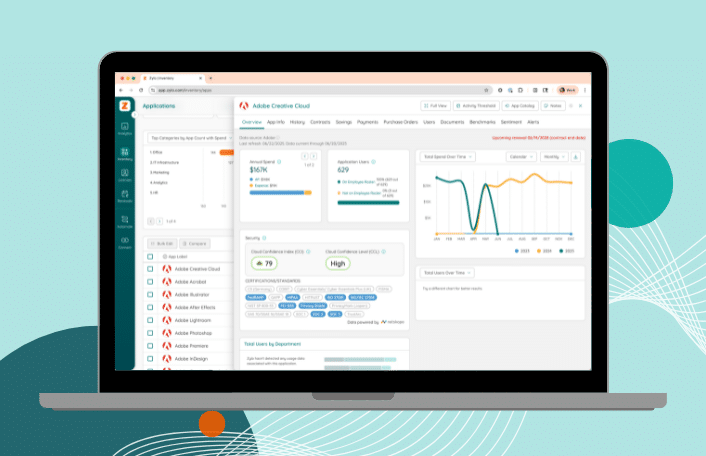
How Zylo Solves Adobe License Management Complexity
Table of Contents ToggleWhat Is Google Workspace License Management?Why It MattersWhat...
Back
Back
Search for Keywords...
Blog
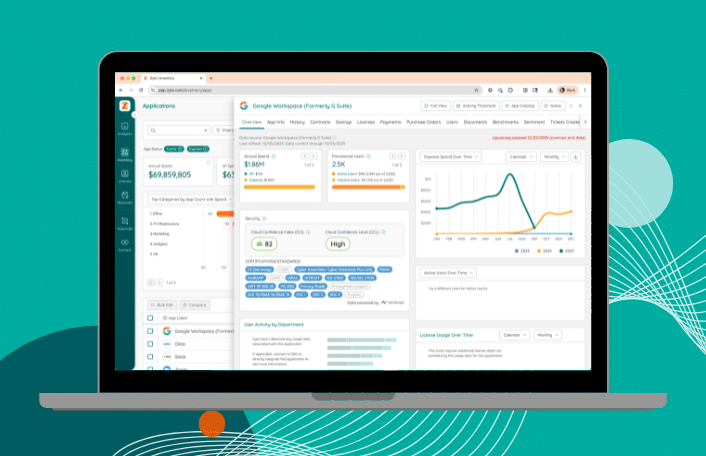
Table of Contents
Google Workspace is vital for business operations, powering email, storage, collaboration, and communication for nearly every team. But Google Workspace license management remains an overlooked source of waste, risk, and missed savings.
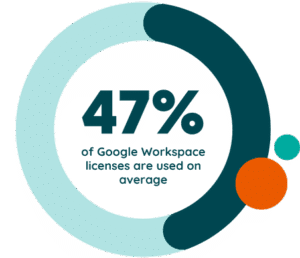 Most organizations operate without clear visibility into usage, ownership, or cost. The result? Over 53% of Google Workspace licenses go unused, wasting an average of $220,000 per company each year.
Most organizations operate without clear visibility into usage, ownership, or cost. The result? Over 53% of Google Workspace licenses go unused, wasting an average of $220,000 per company each year.
Manual provisioning, slow offboarding, and misaligned SKUs make it difficult to manage renewals, optimize spend, or scale efficiently.
In this article, I’ll share how to:
Google Workspace license management is the process of assigning, tracking, optimizing, and reclaiming licenses across Workspace SKUs. It ensures employees have access to the tools they need without overspending or exposing the organization to risk.
At its core, license management aligns entitlements with actual usage. Not all users need the same features, and misalignment leads to waste.
When license management is reactive or ad hoc, the costs add up fast—and so does the risk. Key impacts by role:
Without a clear process, teams overspend on unused seats, assign the wrong SKUs, and miss key contract milestones.
Effective Google Workspace license management includes:
Some teams manage this through spreadsheets or basic admin tools. But as license volumes grow, manual methods often fail to scale efficiently across the business.
Google Workspace offers a wide range of licenses, each with different features, limitations, and price points. Misaligned SKUs are one of the top drivers of waste I’ve seen our clients encounter during audits—especially when higher-cost plans are assigned without need.
Here’s a breakdown of the most common license types used in enterprise environments:
Business plans are limited to 300 users per domain and best suited for small to mid-sized teams or departments with standard collaboration needs.
Prices reflect Google’s published “annual commitment” baseline for U.S. customers. Flexible or regional pricing may differ.
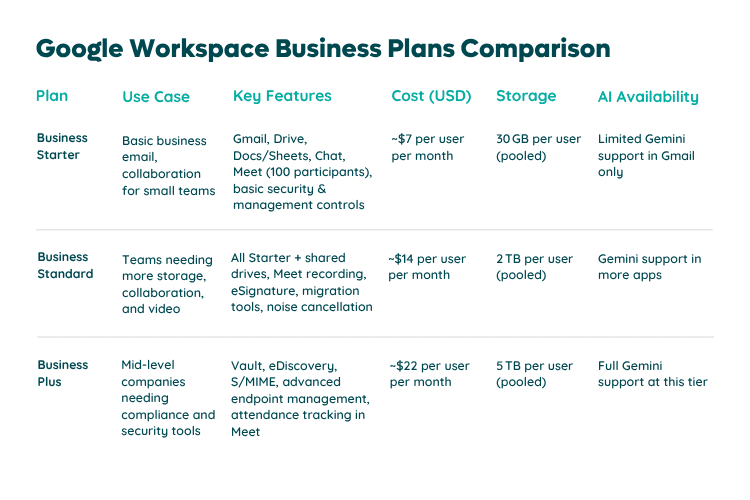
Enterprise SKUs offer full security, compliance, and admin capabilities. There’s no user cap, but they come at a premium.
Enterprise pricing is custom and depends on negotiation, region, user count, and feature set.
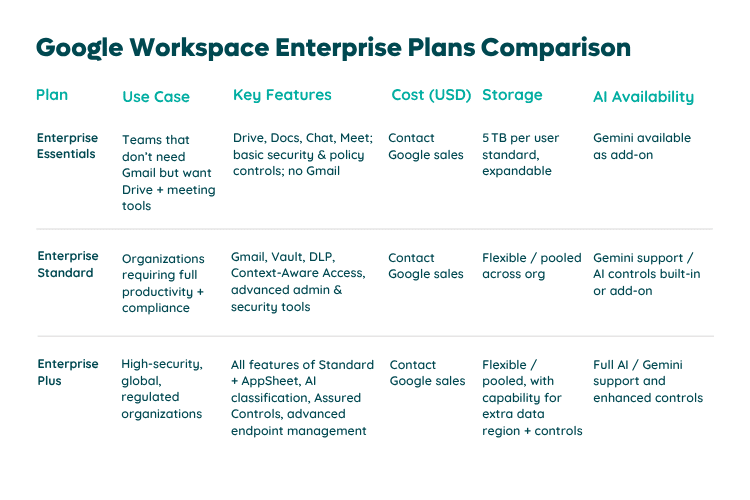
Frontline plans are lightweight, low-cost options for specific roles or industries (e.g., retail, healthcare professionals, transportation).
For example, let’s say your organization is in the retail industry. You may have Enterprise Plus for office workers but Frontline Starter for those who work in the store and don’t need extensive functionality.
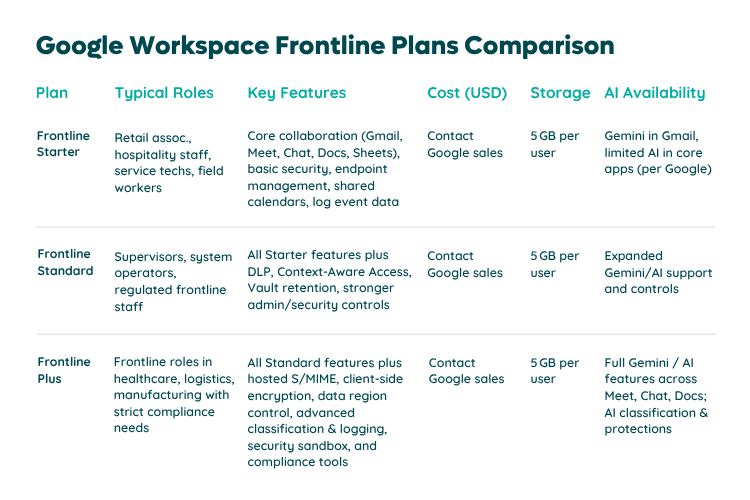
Google’s Gemini licenses are sold separately and can be added to Enterprise plans only.
While the following AI products are standalone, they will still be relevant to your Google renewal.
How licenses are billed has a direct impact on total cost.
Selecting the right SKUs starts with understanding how your users actually work. I typically look at usage patterns, team function, and security requirements when mapping users to plans. A few examples:
Google Workspace offers flexibility across users, teams, and use cases. But that flexibility also introduces complexity. From what I’ve seen across IT, SAM, and Procurement, the same patterns show up again and again:
Google Workspace is frequently over-licensed. Many organizations assign seats by default, with no process to monitor or reallocate them. Zylo data consistently shows that a significant portion of licenses go unused, representing a major source of wasted spend.
Key contributors include:
These challenges are consistent across organizations of all sizes. License volume, user turnover, and growing app portfolios only increase the impact.
In many environments, licenses are still tied to users who shouldn’t have access. I frequently encounter legacy accounts, slow offboarding, and admin consoles that don’t reflect real user status.
Issues include:
These gaps often surface during audits or vendor negotiations, not during day-to-day operations.
Google Workspace includes a full productivity suite, but many organizations also maintain overlapping tools. It’s common to see Slack, Zoom, or Microsoft 365 in parallel. This can lead to significant duplication in licenses, apps, and support efforts.
Common overlap points:
Redundancies are typically a result of decentralized purchasing and siloed ownership. Often, I see different departments adopting tools independently, without central review.
Managing Google Workspace licenses effectively requires a clear, repeatable process. Whether you’re onboarding new hires, offboarding users, or preparing for a renewal, every action should tie back to actual usage and business needs.
At a high level, here’s what the process includes:
Your provisioning policies need to be intentional from the start. I recommend the following:
Most organizations fail to consistently reclaim inactive users licenses. Since Workspace licenses are pooled at the domain level, reclaiming a license simply means making it available for reuse.
Gemini is an individual user-level add-on layered on top of your existing Google Workspace plan. While all users must be on the same SKU, Gemini licenses can be assigned selectively.
Because Gemini is billed per user per month, that makes it one of the only configurable cost levers within a single domain.
Because Gemini costs can scale quickly, I’ve seen it become a major source of silent spend when not tracked closely.
Usage data is your main source of leverage when evaluating if you’re on the right tier.
The renewal is often your only chance to downgrade SKUs or switch between plans.
Once you understand how licenses are structured, the next step is building a management strategy that’s scalable, repeatable, and measurable. I’ve seen the biggest wins come from organizations that treat license management as an ongoing process—not just a cleanup task at renewal.
Here are the five best practices I recommend to help teams get control and cut waste:
Start by defining who owns license decisions and how they should be made.
The more clearly ownership is defined, the less room there is for costly ambiguity.
Don’t wait until renewal season to analyze your license data. Monthly or quarterly reviews allow you to course-correct before waste adds up.
Frequent reviews are one of the fastest ways to reduce shelfware and justify renewals.
Most license waste comes from users who have left the company or changed roles. Building license reclamation into the offboarding process ensures you don’t keep paying for empty seats.
Beyond cost savings, license reclamation also reduces security risk and limits unnecessary access.
Your SKU selection should be based on minimum required features across your user base.
This is often where I see the most untapped savings.
Workspace renewals are your opportunity to correct overages and align your plan to actual needs. But the leverage is in the data, so planning has to start early.
A proactive renewal process creates space for better decisions and measurable savings.
Google Workspace license management is rigid, complex, and easy to get wrong. Zylo brings order to that complexity with a platform purpose-built for SaaS. Whether you’re trying to reduce costs, minimize risk, or streamline renewals, Zylo gives IT, SAM, and Procurement teams the control they need—backed by automation and data.
With Zylo, you can:
Zylo connects directly to your Google Workspace environment, providing a real-time view into license assignments, usage, and cost.
This integration gives you the foundational data needed to make smart, fast decisions.
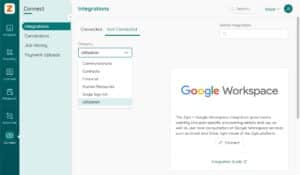
Unused licenses are often left active for weeks—or months—after an employee leaves. With Zylo’s Workflows, you can automatically trigger reclamation when users become inactive or are offboarded.
Zylo’s Insights offer actionable visibility into how Workspace is being used, so you can match license tiers to actual behavior.
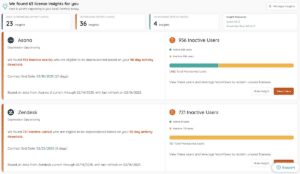
When renewal time hits, Zylo helps you negotiate from a position of strength. Features like the Renewal Calendar and Automated Renewal Alerts ensure nothing gets missed, while data helps justify every decision.
“Zylo allows us greater insights into our software usage. We harvest software licenses resulting in millions of dollars in cost of avoidance. And this data also allows us to build better strategies for contract renewals and negotiations.”
— Ash Rai, Director, Software Asset Manager and Vendor Relations, Adobe
Google Workspace spend adds up fast, especially when licenses go unused or Gemini add-ons are broadly assigned without oversight.
Zylo helps you eliminate that waste. Automation identifies inactive accounts, reclaims licenses, and tracks usage in real time, so you’re not guessing where to cut or how to prepare for renewals.
The impact: lower costs, faster decisions, stronger compliance.
Ready to take control of your Workspace spend? Book a demo or explore Zylo’s SaaS License Management solution to see how automation drives real savings.
Licenses can be assigned in the Google Admin Console by navigating to “Users,” selecting an individual user, and assigning a license under “Licenses.” This works for small teams, but it’s manual and doesn’t scale.
You can check assigned vs. available licenses in the Admin Console under Billing → Licenses, but it won’t show inactive users or unused Gemini seats. For full visibility into license utilization and waste, using a SaaS Management Platform like Zylo is the recommended best practice for large or complex environments.
Most teams benefit from quarterly license audits, especially ahead of renewals. High-growth or high-turnover orgs may need monthly reviews to keep entitlements aligned with usage and to avoid overspend.
Yes. You can mix licenses across Business and Enterprise but must abide by user limits and a minimum purchase requirement. If you have more than 300 users, you’ll need to upgrade to Enterprise since Business only supports up to 300 users.
Gemini licenses are user-level add-ons that enable AI features in Gmail, Docs, Sheets, and Meet. They’re billed per user/month and can be assigned individually. Monitor usage closely and reclaim underused seats regularly.
Zylo data shows that, in 2025, more than 50% of Google Workspace licenses go unused, resulting in over $220,000 in annual waste per company on average. Without regular audits and reclamation workflows, that waste accumulates quickly.
Start 120 days before your renewal. Review license usage, identify inactive users, validate Gemini adoption, and align your license count to actual needs. Bringing accurate, usage-based data into renewal conversations helps avoid overpayment and improves negotiation leverage.
Include license removal in your offboarding process. Many organizations skip this step, leaving licenses provisioned after departure. Automating it with a workflow ensures seats are consistently reclaimed.
If you’re managing hundreds or thousands of users, manual methods won’t scale. A SaaS Management Platform like Zylo provides automation, insights, and governance that reduce waste, risk, and manual effort.
Track license usage trends and headcount changes quarterly. For seasonal or contractor-heavy teams, the Flexible Plan can reduce cost exposure—despite higher per-seat pricing—by letting you scale up or down as needed.
Enterprise Standard or Enterprise Plus typically meet compliance needs. They include Vault, DLP, eDiscovery, and advanced admin controls required for finance, healthcare, legal, and other regulated sectors.
ABOUT THE AUTHOR

Connor Mullaney
Connor is a Product Manager at Zylo with a background in customer service, having supported the company’s largest Enterprise clients. In his role today, he helps drive Zylo’s product strategy for SaaS licensing, usage, and consumption/capacity tracking. Before Zylo, Connor worked as a Software Asset Management (SAM) consultant, helping Enterprises build effective licensing positions (ELP) and manage audits for major software publishers. With firsthand experience of how manual SAM and SaaS Management can be, he’s passionate about building solutions that surface meaningful insights and cost-saving opportunities for clients.

Table of Contents ToggleWhat Is Google Workspace License Management?Why It MattersWhat...

Discover how ModMed used Zylo’s powerful license tracking and optimization to save millions of dollars, drive operational excellence, and improve the employee experience.
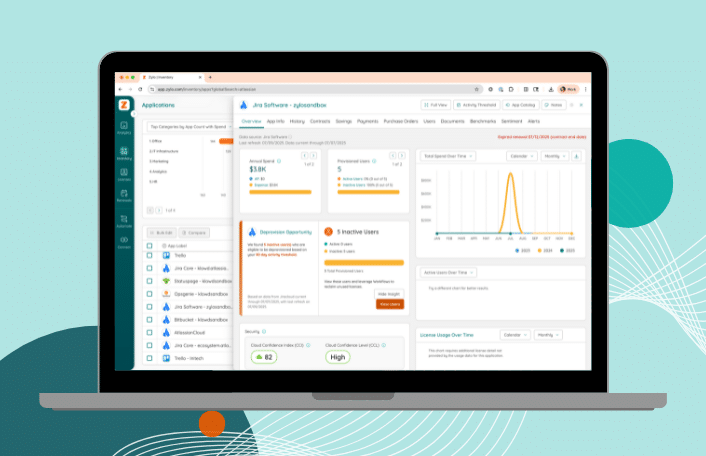
Table of Contents ToggleWhat Is Google Workspace License Management?Why It MattersWhat...

In the past 4 years, Adobe has rapidly scaled from $9B to $18B. This growth has made an already complex environment even more complex. Learn how they leveraged Zylo to get complete visibility into their SaaS portfolio, unlock millions in cost savings and avoidance and improve the employee experience.
| Cookie | Duration | Description |
|---|---|---|
| cookielawinfo-checkbox-analytics | 11 months | This cookie is set by GDPR Cookie Consent plugin. The cookie is used to store the user consent for the cookies in the category "Analytics". |
| cookielawinfo-checkbox-functional | 11 months | The cookie is set by GDPR cookie consent to record the user consent for the cookies in the category "Functional". |
| cookielawinfo-checkbox-necessary | 11 months | This cookie is set by GDPR Cookie Consent plugin. The cookies is used to store the user consent for the cookies in the category "Necessary". |
| cookielawinfo-checkbox-others | 11 months | This cookie is set by GDPR Cookie Consent plugin. The cookie is used to store the user consent for the cookies in the category "Other. |
| cookielawinfo-checkbox-performance | 11 months | This cookie is set by GDPR Cookie Consent plugin. The cookie is used to store the user consent for the cookies in the category "Performance". |
| viewed_cookie_policy | 11 months | The cookie is set by the GDPR Cookie Consent plugin and is used to store whether or not user has consented to the use of cookies. It does not store any personal data. |
